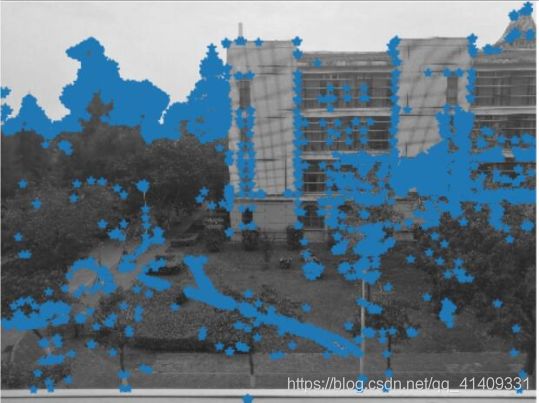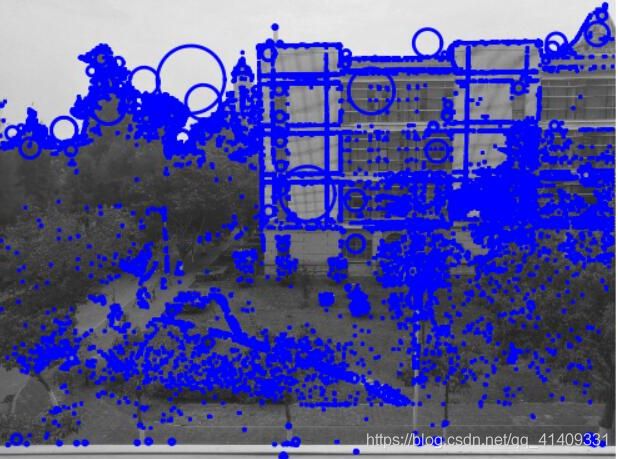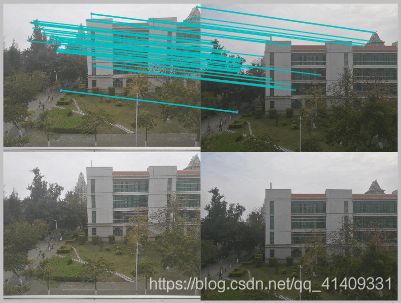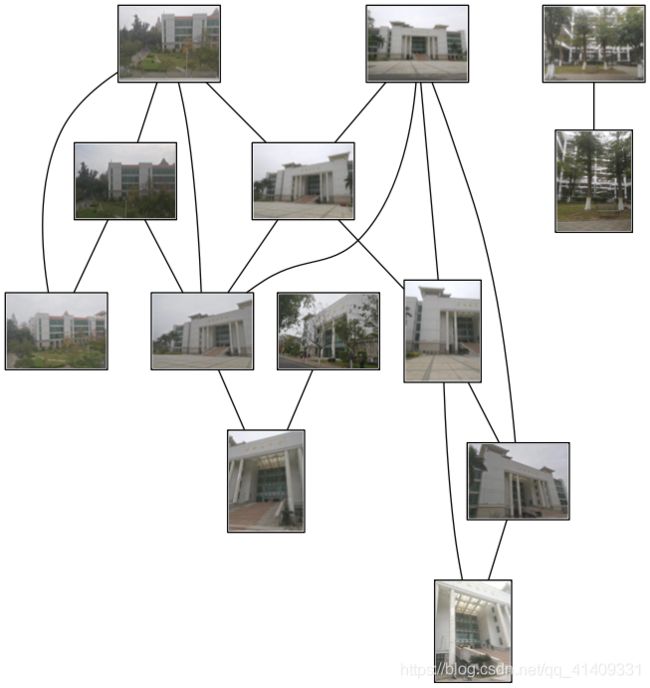python计算机视觉编程(三)——Harris角点 SIFT 匹配地理标记图像
局部图像描述子
- 准备
- VLFeat
- pydot工具包
- Harris角点
- 原理
- 代码实现
- SIFT
- 原理
- 代码实现
- Harris与SIFT的对比
- 匹配地理标记图像
- 一些用到的函数
准备
使用的到一些函数在文末给出
VLFeat
使用开源工具包VLFeat提供的二进制文件来计算图像的SIFT特征
链接: http://www.vlfeat.org/建议下载20以前的版本,最新版本产生的SIFT特征文本为空
将bin目录下对应的系统文件夹复制出来
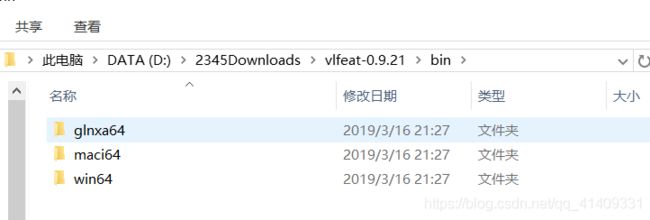
之后将process_image函数中路径改成相应的位置

pydot工具包
用pydot可以直接可视化他们直接的关联
1.安装graphviz
pip install graphviz
2.安装graphviz软件,地址在:https://graphviz.gitlab.io/_pages/Download/Download_windows.html
3.把安装后的graphviz软件的bin目录设为环境变量,重启。
4.安装pydot
pip install pydot
由于sift速度较慢,建议把图片压缩后使用!!!
Harris角点
原理
角点检测最原始的想法就是取某个像素的一个邻域窗口,当这个窗口在各个方向上进行小范围移动时,观察窗口内平均的像素灰度值的变化(即,E(u,v))。
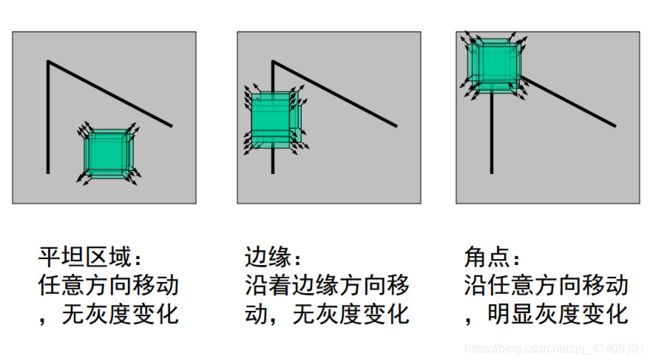
从上图可知,我们可以将一幅图像大致分为三个区域(‘flat’,‘edge’,‘corner’),这三个区域变化是不一样的。
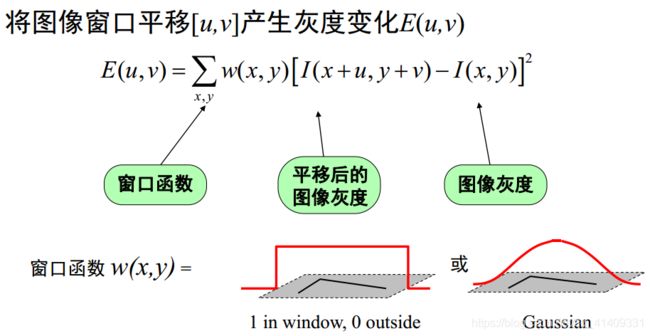
将函数二维泰勒展开
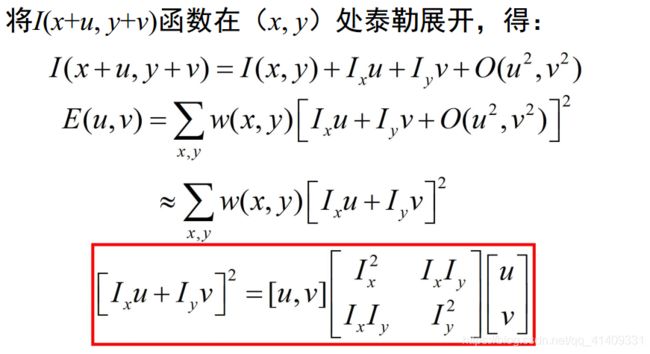
于是对于局部微小的移动量 [u,v], 可以近似得到下面的表达:

其中M是 22 矩阵, 可由图像的导数求得:

窗口移动导致的图像变化量: 实对称矩阵M的特征值分析

记M的特征值为 λ 1, λ 2

定义: 角点响应函数R
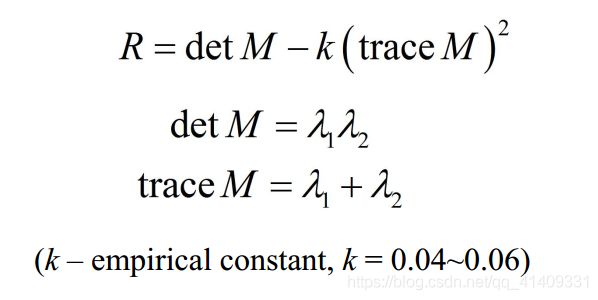

角点计算流程:
对角点响应函数R进行阈值处理:
R > threshold
提取R的局部极大值
代码实现
Harris角点检测
from pylab import *
from PIL import Image
from scipy.ndimage import filters
from sift import *
# 读入图像
im = array(Image.open('123.jpg').convert('L'))
# 检测harris角点
harrisim = compute_harris_response(im)
filtered_coords = get_harris_points(harrisim,6)
plot_harris_points(im, filtered_coords)
from pylab import *
from PIL import Image
from pylab import *
from numpy import *
from scipy.ndimage import filters
from sift import *
im1 = array(Image.open("123.jpg").convert("L"))
im2 = array(Image.open("456.jpg").convert("L"))
# resize加快匹配速度
im1 = imresize(im1, (int(im1.shape[1]/2), int(im1.shape[0]/2)))
im2 = imresize(im2, (int(im2.shape[1]/2), int(im2.shape[0]/2)))
wid = 5
harrisim = compute_harris_response(im1, 5)
filtered_coords1 = get_harris_points(harrisim, wid+1)
d1 = get_descriptors(im1, filtered_coords1, wid)
harrisim = compute_harris_response(im2, 5)
filtered_coords2 = get_harris_points(harrisim, wid+1)
d2 = get_descriptors(im2, filtered_coords2, wid)
print ('starting matching')
matches = match_twosided(d1, d2)
figure()
gray()
plot_matches(im1, im2, filtered_coords1, filtered_coords2, matches)
show()
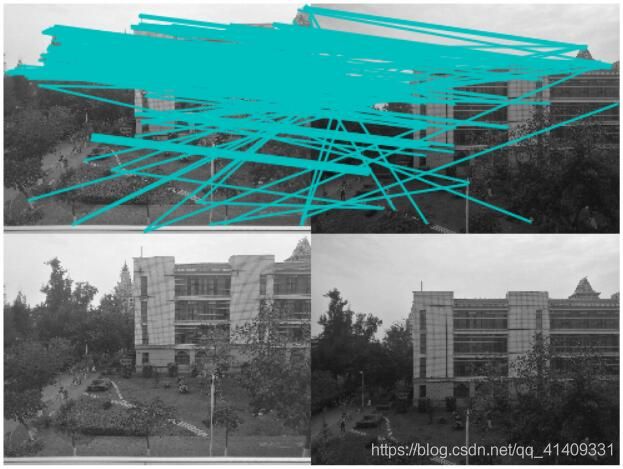
可以看出特征点的匹配比较混乱,下文将介绍SIFT,它的效果非常不错,缺点就是比较耗时。
SIFT
原理
SIFT算法实现特征匹配主要有三个流程, 1、 提取关键点; 2、 对关键点附加
详细的信息( 局部特征) , 即描述符; 3、 通过特征点( 附带上特征向量的关
键点) 的两两比较找出相互匹配的若干对特征点, 建立景物间的对应关系。
1.高斯模糊
高斯模糊是在Adobe Photoshop等图像处理软件中广泛使用的处理
效果, 通常用它来减小图像噪声以及降低细节层次。 这种模糊技术生成
的图像的视觉效果是好像经过一个半透明的屏幕观察图像。
二维高斯函数
高斯卷积核是实现尺度变换的唯一变换核,并且是唯一的线性核。高斯模糊是一种图像滤波器,它使用正态分布(高斯函数)计算模糊模板,并使用该模板与原图像做卷积运算,达到模糊图像的目的。

2.尺度空间
尺度空间理论最早于1962年提出, 其主要思想是通过对原始图像进行尺度变换, 获得图像多尺度下的空间表示。从而实现边缘、 角点检测和不同分辨率上的特征提取, 以满足特征点的尺度不变性。尺度空间中各尺度图像的模糊程度逐渐变大, 能够模拟人在距离目标由近到远时目标在视网膜上的形成过程。尺度越大图像越模糊。
2.1高斯金字塔
高斯金子塔的构建过程可分为两步:
( 1) 对图像做高斯平滑;
( 2) 对图像做降采样。
为了让尺度体现其连续性, 在简单下采样的基础上加上了高斯滤波。一幅图像可以产生几组( octave)图像, 一组图像包括几层( interval) 图像。

高斯图像金字塔共o组、 s层,则有:

σ——尺度空间坐标;
s——sub-level层坐标;
σ0——初始尺度;
S——每组层数( 一般为3~5)
最后可将组内和组间尺度归为:

i——金字塔组数
n——每一组的层数
2.2DOG
使用高斯金字塔每组中相邻上下两层图像相减,得到高斯差分图像,进行极值检测。


可以通过高斯差分图像看出图像上的像素值变化情况。 ( 如果没有变化, 也就没有特征。 特征必须是变化尽可能多的点。 )DOG图像描绘的是目标的轮廓。
2.3DoG的局部极值点
特征点是由DOG空间的局部极值点组成的。 为了寻找DoG函数的极值点,每一个像素点要和它所有的相邻点比较, 看其是否比它的图像域和尺度域的相邻点大或者小。中间的检测点和它同尺度的8个相邻点和上下相邻尺度对应的9× 2个点共26个点比较, 以确保在尺度空间和二维图像空间都检测到极值点。
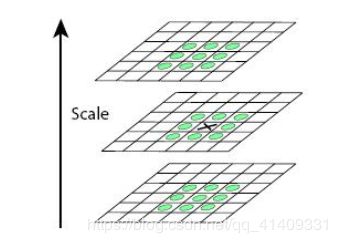
3关键点定位
3.1去除边缘响应
由于DoG函数在图像边缘有较强的边缘响应, 因此需要排除边缘响应。DoG函数的峰值点在边缘方向有较大的主曲率, 而在垂直边缘的方向有较小的主曲率。主曲率可以通过计算在该点位置尺度的2×2的Hessian矩阵得到, 导数由采样点相邻差来估计:
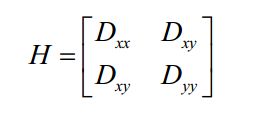
Dxx 表示DOG金字塔中某一尺度的图像x方向求导两次
D的主曲率和H的特征值成正比。 令 α , β为特征值, 则

该值在两特征值相等时达最小。 Lowe论文中建议阈值T为1.2, 即 时保留关键点, 反之剔除
时保留关键点, 反之剔除
4方向分配
通过尺度不变性求极值点, 可以使其具有缩放不变的性质。 而利
用关键点邻域像素的梯度方向分布特性, 可以为每个关键点指定方向参数
方向, 从而使描述子对图像旋转具有不变性。
像素点的梯度表示:
梯度幅值:
梯度方向:
通过求每个极值点的梯度来为极值点赋予方向。
方向直方图的生成
确定关键点的方向采用梯度直方图统计法, 统计以关键点为原点, 一定区域内的图像像素点对关键点方向生成所作的贡献。
关键点主方向: 极值点周围区域梯度直方图的主峰值也是特征点方向。
关键点辅方向: 在梯度方向直方图中, 当存在另一个相当于主峰值80%能量的峰值时, 则将这个方向认为是该关键点的辅方向。
这可以增强匹配的鲁棒性, Lowe的论文指出大概有15%关键点具有
多方向, 但这些点对匹配的稳定性至为关键。
5关键点特征描述
下图是一个SIFT描述子事例。 其中描述子由2× 2× 8维向量表征, 也即是2× 2个8方向的方向直方图组成。 左图的种子点由8× 8单元组成。 每一个小格都代表了特征点邻域所在的尺度空间的一个像素, 箭头方向代表了像素梯度方向, 箭头长度代表该像素的幅值。 然后在4×4的窗口内计算8个方向的梯度方向直方图。 绘制每个梯度方向的累加可形成一个种子点, 如右图所示: 一个特征点由4个种子点的信息所组成。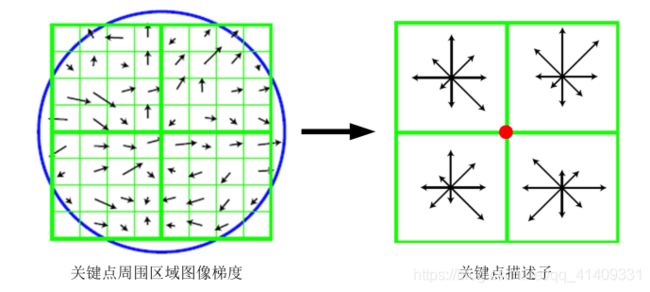
6关键点匹配
分别对模板图( 参考图, reference image) 和实时图( 观测图,observation image) 建立关键点描述子集合。 目标的识别是通过两点集内关键点描述子的比对来完成。 具有128维的关键点描述子的相似性度量采用欧式距离。

穷举匹配

模板图中关键点描述子:
![]()
实时图中关键点描述子:
![]()
任意两描述子相似性度量:
要得到配对的关键点描述子需满足:
关键点的匹配可以采用穷举法来完成, 但是这样耗费的时间太多, 一
般都采用kd树的数据结构来完成搜索。 搜索的内容是以目标图像的关
键点为基准, 搜索与目标图像的特征点最邻近的原图像特征点和次邻
近的原图像特征点。
Kd树是一个平衡二叉树

代码实现
SIFT特征检测
from PIL import Image
from pylab import *
from numpy import *
import os
from sift import *
imname = '123.jpg'
im1 = array(Image.open(imname).convert('L'))
process_image(imname, 'empire.sift')
l1,d1 = read_features_from_file('empire.sift')
figure()
gray()
plot_features(im1, l1, circle=True)
show()
from PIL import Image
from pylab import *
import sys
import sift
if len(sys.argv) >= 3:
im1f, im2f = sys.argv[1], sys.argv[2]
else:
im1f = '123.jpg'
im2f = '456.jpg'
im1 = array(Image.open(im1f))
im2 = array(Image.open(im2f))
sift.process_image(im1f, 'out_sift_1.txt')
l1, d1 = sift.read_features_from_file('out_sift_1.txt')
figure()
gray()
subplot(121)
sift.plot_features(im1, l1, circle=False)
sift.process_image(im2f, 'out_sift_2.txt')
l2, d2 = sift.read_features_from_file('out_sift_2.txt')
subplot(122)
sift.plot_features(im2, l2, circle=False)
matches = sift.match_twosided(d1, d2)
print ('{} matches'.format(len(matches.nonzero()[0])))
figure()
gray()
sift.plot_matches(im1, im2, l1, l2, matches, show_below=True)
show()
Harris与SIFT的对比
from PIL import Image
from pylab import *
import sift
imname = '123.jpg'
im = array(Image.open(imname).convert('L'))
sift.process_image(imname, 'empire.sift')
l1, d1 = sift.read_features_from_file('empire.sift')
figure()
gray()
subplot(131)
sift.plot_features(im, l1, circle=False)
subplot(132)
sift.plot_features(im, l1, circle=True)
# 检测harris角点
harrisim = sift.compute_harris_response(im)
subplot(133)
filtered_coords = sift.get_harris_points(harrisim, 6, 0.1)
imshow(im)
plot([p[1] for p in filtered_coords], [p[0] for p in filtered_coords], '*')
axis('off')
show()

三图分别为SIFT特征,用圆圈表示SIFT特征,Harris角点
明显的看出SIFT特征数量较多,同时通过上文的匹配点匹配效果来看,SIFT的效果远远优于Harris,缺点是运行时间长
匹配地理标记图像
可以通过匹配多张图片的描述子,找到他们之间的对应关系
from pylab import *
from PIL import Image
import sift
import pydot
import os
def get_imlist(path):
return [os.path.join(path,f) for f in os.listdir(path) if f.endswith('.jpg')]
download_path = "D:/opencv-py/image"
path = "D:/opencv-py/image"
imlist = get_imlist(download_path)
nbr_images = len(imlist)
featlist = [imname[:-3] + 'sift' for imname in imlist]
for i, imname in enumerate(imlist):
sift.process_image(imname, featlist[i])
matchscores = zeros((nbr_images, nbr_images))
for i in range(nbr_images):
for j in range(i, nbr_images): # only compute upper triangle
print ('comparing ', imlist[i], imlist[j])
l1, d1 = sift.read_features_from_file(featlist[i])
l2, d2 = sift.read_features_from_file(featlist[j])
matches = sift.match_twosided(d1, d2)
nbr_matches = sum(matches > 0)
print ('number of matches = ', nbr_matches)
matchscores[i, j] = nbr_matches
print ("The match scores is: \n", matchscores)
for i in range(nbr_images):
for j in range(i + 1, nbr_images): # no need to copy diagonal
matchscores[j, i] = matchscores[i, j]
threshold = 2 # min number of matches needed to create link
g = pydot.Dot(graph_type='graph') # don't want the default directed graph
for i in range(nbr_images):
for j in range(i + 1, nbr_images):
if matchscores[i, j] > threshold:
# first image in pair
im = Image.open(imlist[i])
im.thumbnail((100, 100))
filename = path + str(i) + '.png'
im.save(filename) # need temporary files of the right size
g.add_node(pydot.Node(str(i), fontcolor='transparent', shape='rectangle', image=filename))
im = Image.open(imlist[j])
im.thumbnail((100, 100))
filename = path + str(j) + '.png'
im.save(filename) # need temporary files of the right size
g.add_node(pydot.Node(str(j), fontcolor='transparent', shape='rectangle', image=filename))
g.add_edge(pydot.Edge(str(i), str(j)))
g.write_png('whitehouse.png')
一些用到的函数
sift.py
from PIL import Image
import os
from numpy import *
from pylab import *
from scipy.ndimage import filters
def imresize(im,sz):
pil_im = Image.fromarray(uint8(im))
return array(pil_im.resize(sz))
def compute_harris_response(im,sigma=3):
imx = zeros(im.shape)
filters.gaussian_filter(im, (sigma,sigma), (0,1), imx)
imy = zeros(im.shape)
filters.gaussian_filter(im, (sigma,sigma), (1,0), imy)
Wxx = filters.gaussian_filter(imx*imx,sigma)
Wxy = filters.gaussian_filter(imx*imy,sigma)
Wyy = filters.gaussian_filter(imy*imy,sigma)
Wdet = Wxx*Wyy - Wxy**2
Wtr = Wxx + Wyy
return Wdet / Wtr
def get_harris_points(harrisim,min_dist=10,threshold=0.1):
corner_threshold = harrisim.max() * threshold
harrisim_t = (harrisim > corner_threshold) * 1
coords = array(harrisim_t.nonzero()).T
candidate_values = [harrisim[c[0],c[1]] for c in coords]
index = argsort(candidate_values)[::-1]
allowed_locations = zeros(harrisim.shape)
allowed_locations[min_dist:-min_dist,min_dist:-min_dist] = 1
filtered_coords = []
for i in index:
if allowed_locations[coords[i,0],coords[i,1]] == 1:
filtered_coords.append(coords[i])
allowed_locations[(coords[i,0]-min_dist):(coords[i,0]+min_dist),
(coords[i,1]-min_dist):(coords[i,1]+min_dist)] = 0
return filtered_coords
def plot_harris_points(image,filtered_coords):
""" Plots corners found in image. """
figure()
gray()
imshow(image)
plot([p[1] for p in filtered_coords],[p[0] for p in filtered_coords],'*')
axis('off')
show()
def get_descriptors(image,filtered_coords,wid=5):
""" For each point return pixel values around the point
using a neighbourhood of width 2*wid+1. (Assume points are
extracted with min_distance > wid). """
desc = []
for coords in filtered_coords:
patch = image[coords[0]-wid:coords[0]+wid+1,
coords[1]-wid:coords[1]+wid+1].flatten()
desc.append(patch)
return desc
def match(desc1,desc2,threshold=0.5):
""" For each corner point descriptor in the first image,
select its match to second image using
normalized cross correlation. """
n = len(desc1[0])
# pair-wise distances
d = -ones((len(desc1),len(desc2)))
for i in range(len(desc1)):
for j in range(len(desc2)):
d1 = (desc1[i] - mean(desc1[i])) / std(desc1[i])
d2 = (desc2[j] - mean(desc2[j])) / std(desc2[j])
ncc_value = sum(d1 * d2) / (n-1)
if ncc_value > threshold:
d[i,j] = ncc_value
ndx = argsort(-d)
matchscores = ndx[:,0]
return matchscores
def match_twosided(desc1,desc2,threshold=0.5):
""" Two-sided symmetric version of match(). """
matches_12 = match(desc1,desc2,threshold)
matches_21 = match(desc2,desc1,threshold)
ndx_12 = where(matches_12 >= 0)[0]
# remove matches that are not symmetric
for n in ndx_12:
if matches_21[matches_12[n]] != n:
matches_12[n] = -1
return matches_12
def appendimages(im1,im2):
""" Return a new image that appends the two images side-by-side. """
# select the image with the fewest rows and fill in enough empty rows
rows1 = im1.shape[0]
rows2 = im2.shape[0]
if rows1 < rows2:
im1 = concatenate((im1,zeros((rows2-rows1,im1.shape[1]))),axis=0)
elif rows1 > rows2:
im2 = concatenate((im2,zeros((rows1-rows2,im2.shape[1]))),axis=0)
# if none of these cases they are equal, no filling needed.
return concatenate((im1,im2), axis=1)
def plot_matches(im1,im2,locs1,locs2,matchscores,show_below=True):
""" Show a figure with lines joining the accepted matches
input: im1,im2 (images as arrays), locs1,locs2 (feature locations),
matchscores (as output from 'match()'),
show_below (if images should be shown below matches). """
im3 = appendimages(im1,im2)
if show_below:
im3 = vstack((im3,im3))
imshow(im3)
cols1 = im1.shape[1]
for i,m in enumerate(matchscores):
if m>0:
plot([locs1[i][1],locs2[m][1]+cols1],[locs1[i][0],locs2[m][0]],'c')
axis('off')
def process_image(imagename, resultname, params="--edge-thresh 10 --peak-thresh 5"):
""" 处理一幅图像,然后将结果保存在文件中"""
if imagename[-3:] != 'pgm':
#创建一个pgm文件
im = Image.open(imagename).convert('L')
im.save('tmp.pgm')
imagename ='tmp.pgm'
cmmd = str("D:\Python36\Lib\win64\sift.exe "+imagename+" --output="+resultname+" "+params)
os.system(cmmd)
def read_features_from_file(filename):
"""读取特征属性值,然后将其以矩阵的形式返回"""
f = loadtxt(filename)
return f[:,:4], f[:,4:] #特征位置,描述子
def write_featrues_to_file(filename, locs, desc):
"""将特征位置和描述子保存到文件中"""
savetxt(filename, hstack((locs,desc)))
def plot_features(im, locs, circle=False):
"""显示带有特征的图像
输入:im(数组图像),locs(每个特征的行、列、尺度和朝向)"""
def draw_circle(c,r):
t = arange(0,1.01,.01)*2*pi
x = r*cos(t) + c[0]
y = r*sin(t) + c[1]
plot(x, y, 'b', linewidth=2)
imshow(im)
if circle:
for p in locs:
draw_circle(p[:2], p[2])
else:
plot(locs[:,0], locs[:,1], 'ob')
axis('off')
